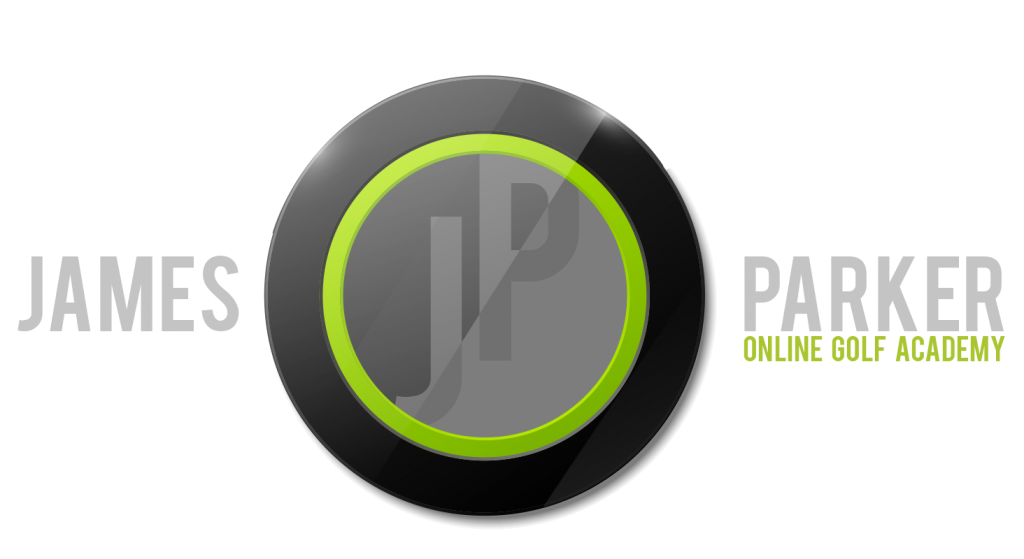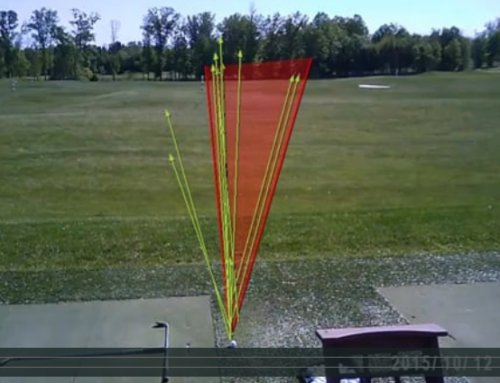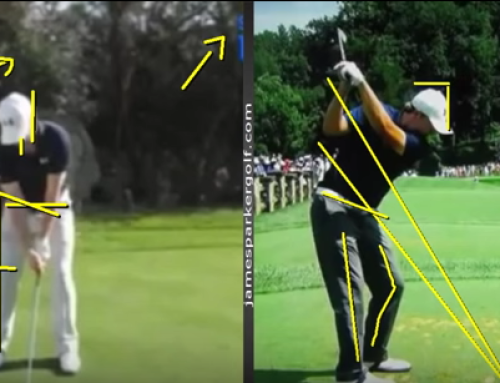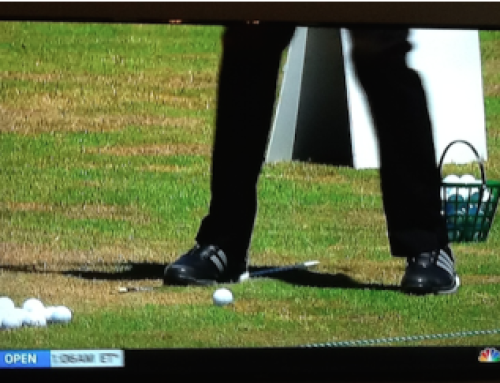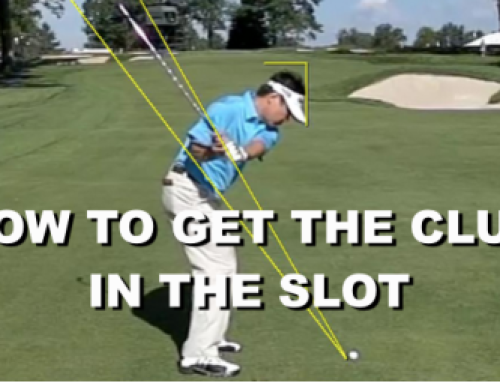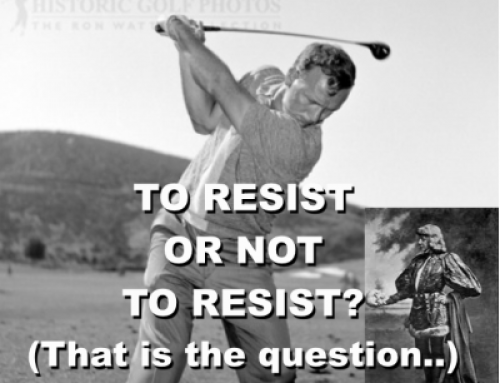Project Description
 In my swing model I want you to start with a little more weight on your front foot, 55%!
In my swing model I want you to start with a little more weight on your front foot, 55%!
When you do this you’re really now using your left leg as the anchor of the swing.
This is what we pivot around.
When we bend forward with the spine to assume our posture, the pelvis tilts forward putting you in flexion.
From this position you want to feel your right hip moving upwards and backward.
And your tailbone moving toward the target.
Please make sure you watch the “Tailbone Drill” and the “Straighten Your Right Leg Drill” below.
make sense.
If you’re not catching yourself moving like this in front of a mirror to see what it looks like, frankly you’re not serious about improving.
I want you to turn your hips to the maximum, not restrict them.
This is a problem i’ve had with the conventional swing for many years now. I simply don’t see loading the weight into the back thigh and keeping the back knee flexed as a sensible way of moving and pivoting.
If the objective is to hit the ball first and the ground after, why have we been trying to move our body and weight to the right and then to the left?
Well, I think in part we’ve been so focused for so many years on what the most famous coaches are teaching the best players in the world. Tiger may have been able to move laterally off the ball in the backswing and then back over the ball through impact because he hits lots of balls every day and grooved it in his move. Plus, he’s Tiger Woods!
If you look at his swing nowadays under the guidance of Sean Foley, He has no sway to the right any more.
I’m often embarrassing my wife when we’re in a shop and there’s big mirrors everywhere. I stand there holding an imaginary club and move in slow motion practicing my swing, almost yoga style!
This is my deep practice. And it’s what I go through in my technical practice time on the range.
So with the lower body moving toward the target on the backswing.
you should still feel slightly more weight on the front foot and on the inside of the back foot.
This is where you should push from at the start of the downswing.
The left knee should go in and down whilst the right knee moves back. This straightens your back leg (a little) and allows your right hip to operate properly, feeling like its moving behind you. NEVER to the right, away from the target.
At the start of the downswing we transfer the weight onto the front side in a gradual manner. It’s this time when the arms move back down in front of the body creating the lag.
We want to move the center of the hips laterally and move them back to a level tilt to finish the swing.
During the transition from backswing to downswing, the front knee moves toward the target, into a squatting position ready to straighten the front leg. You want to feel like you’re bracing or sitting with the front leg before you straighten it, and pushing off with your back leg.
This is why we need the weight on the inside of the back foot during the backswing. This move is simply not possible if the weight moves to the outside of the back foot during the backswing caused by the hips moving laterally.
Another reason we don’t want all our weight on our back foot during the backswing is because for most people it takes too long to move the majority of the weight onto the front foot during the downswing.
What tends to happen upon close inspection is the weight stays back and leads to the club bottoming out before the ball. Causing fat and thin shots and shots that are generally not compressed or struck very well.
Once the front leg is in a squatting position you can then push up on it, straightening it, as the arms swing back down in front of you to hit the ball.
So a great exercise would be to make sure you’re timing your arms extending back down in front of you with the straightening of both legs. You can practice this at home without a club in your hands. I do it all the time!
This is basically impact position, only your right arm doesn’t fully extend until after impact.
Another great drill whilst you’re at the range is swinging a lot slower than normal during your practice swings and stop just after impact. Here, both arms and legs should be extended with the majority of your weight on your front foot. Your heel of your back foot should be also be leading your toes.

